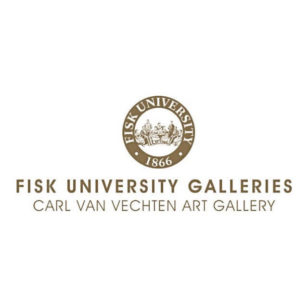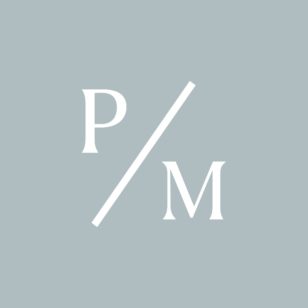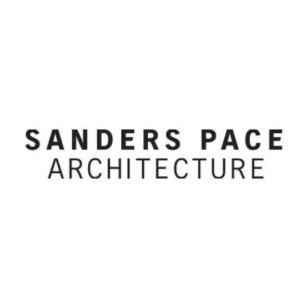INTERVIEW: BETH REITMEYER
MAR. 08, 2024
INTERVIEW: BETH REITMEYER
MAR. 08, 2024
Wesley Roden: Though many artists seek to emulate childlikeness in their work, your sculptures stand apart by appealing specifically to children. How is sculpture serving a role in artistic literacy as well as general development for a younger generation?
Beth Reitmeyer: I want the world to be a magical place, a place in which we all experience wonder and awe. As I consider my audience, I don’t set out to appeal specifically to children, but often they are the quickest to embrace the wonder of an art experience. For example, they are amazed when they mix yellow and blue paint together and discover, for the first time, that they made green. I want my work to be universal, and what appeals to children appeals to adults, too — the adults need an invitation and a nudge to engage. My work often incorporates ideas of beauty, what we value, and why. To children, glitter and pipe cleaners are some of the most beautiful things in the world, but as adults we view them as cheap and annoying. I teach art to children and adults, and one of my goals is for people to have fun and joy as they make and engage with art. Art shouldn’t only show struggle and tragedy and pain. Contemporary life is difficult, serious, and divisive, but it is also joyous and meaningful — we need art to bring joy, engagement, and community. Children want to touch objects and play with them. Adults do, too. My art objects are created so that people can touch and handle them, have meaningful conversations, and find joy without shame.
WR: Having work that is both whimsical and conceptually robust, have you been afforded a unique position to either introduce play into a fine art setting or add to the existing conversation? How do you present your work to adults looking to have that child-likeness rekindled?
BR: The art objects themselves are inviting and nonthreatening. People are curious. They want connection. I am part of the work as much as possible, inviting people to make a wish or write on an orb. People want to know how to engage with the work, and a person with an invitation is more compelling than a block of text on a wall. I invite everyone, even the person who, on the surface, appears to be the least likely person to engage with the work. This past year I invited people to make wishes on stars. I joke that 12-year-old girls are the people who understand my artwork first, but this year has challenged my thinking on this. In New York, I invited an older, affluent Wall Street-type of businessman to make a wish. He looked at me and told me, “I really want to make a wish.” And later, “thank you — I needed this right now.” In Fayetteville, AR, I invited a group of five rough guys covered in tattoos who were walking through the park to make wishes. They shrugged and said, “Why not?” They took their time to write out their wishes, thanking me as they walked away. Everyone wants to connect and to be heard, not only children. Everyone needs hope.
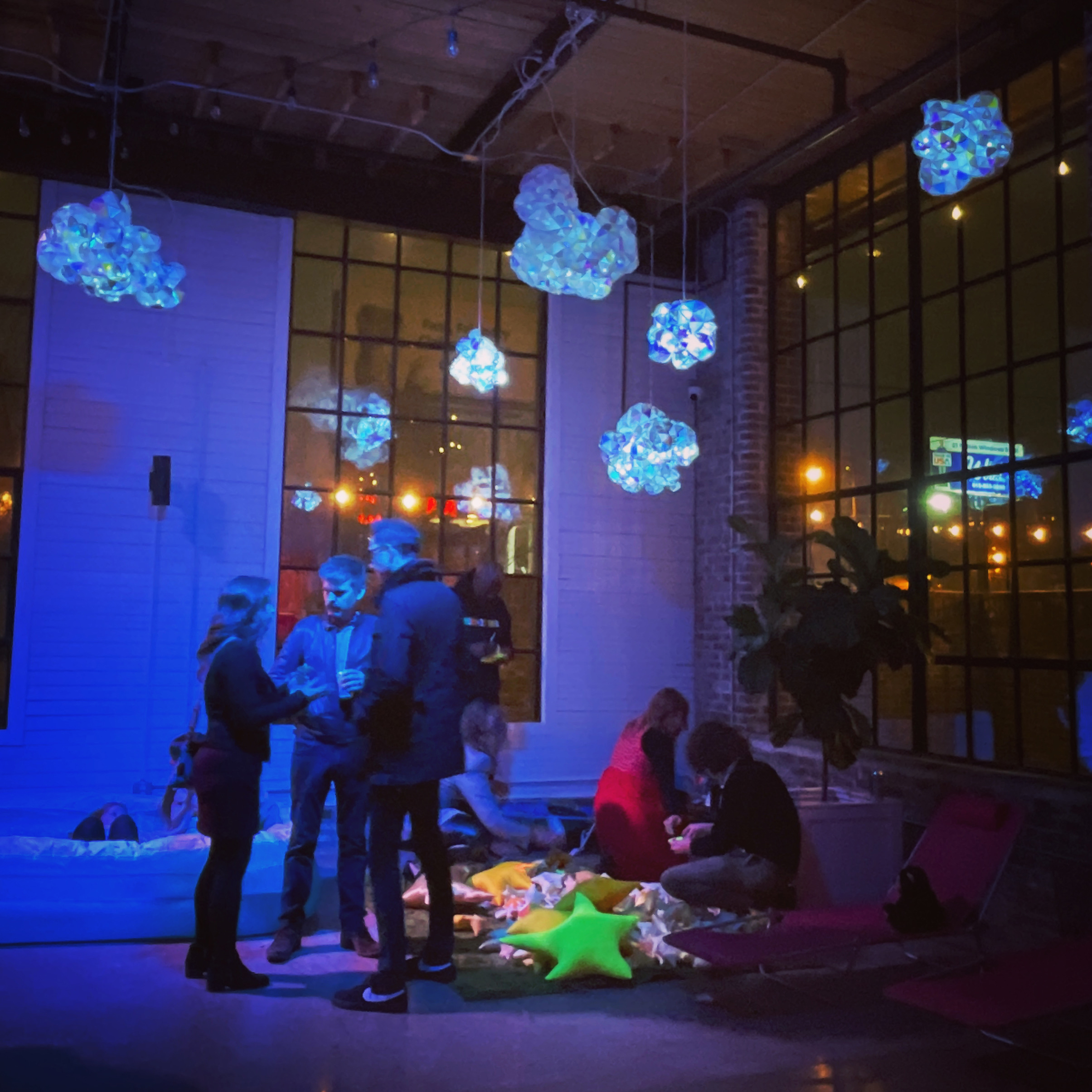
Beth Reitmeyer, Storm and Wishing Stars, Dream House, 2022, mixed media, in collaboration with Be Witched and Kindling Arts, Ozari, Nashville, TN
WR: Your work, particularly your Geodes, seems to deal in tactile reversal. By depicting a thing as hard as rock using soft and inviting materials, do you paint nature in a more precious or welcoming light? If so, what are some more ways that you take the edge off of your subject through subversion of material?
BR: There are two kinds of people in the world: those with rocks in their pockets and those without rocks in their pockets. I have a collection of real rocks, and I share those with people, too. Most of them are in my car and travel around with me. I pick up rocks because they are everywhere, they are free, and I am able to assign meaning to them. My rocks are talismans to the experience I had when I picked them up, a reminder of the experience and the people I was with at the time I picked up the rock. I’ve connected with so many people by talking about our real rocks.
My geodes were created in collaboration with the band, ELEL. They have a song and album with music about how relationships are formed within a specific place. For the band, it came when crossing the border to New Mexico and discovering a geode there. The geode became a magical moment to cement a relationship. My geodes, along with ELEL’s music, create a memorable experience for people within a time and place. My geodes are now in homes across the country, each one has its meaning assigned by its owner and is a talisman of their initial experience with them. In that way the geodes function as rocks within a collection, as talismans and memories of a specific shared experience.
My geodes aren’t particularly soft in reality — the pipe cleaners are prickly and the plastics are smooth yet firm. They are engaging and inspire curiosity, and people want to touch them. This makes me happy.
Beth Reitmeyer, Wishing Stars with Geodes, 2023, mixed media installation, ChaSaMa Rama, ChaSaMa, New York, NY
WR: Your work seems to often ignore the “do not touch rule,” welcoming squishing and holding. What role does tactility play in making the work personal to the viewer? Is there a need not only for a visual but also a multi-sensory approach to both communication and education?
BR: When my niece was five, we went to the art museum. She was fascinated by the sparkly “do not cross” silver line in front of the artwork. She crossed it, and then she was told by a guard, in a firm tone, she was too close and to step back. She cried. “Why is the line so beautiful if I can’t touch it?” This event resonated to me the importance of creating art that people can touch and interact with.
The pandemic has also heightened our need for touch. My college students are carrying stuffed animals with them to class, relying upon them for comfort when stressed. The pandemic revealed our need for tactile, comforting experiences. It normalized our need for tactile experiences.
I also believe that art that engages as many of our five senses as possible resonates more with the audience. To this end, when I create my installations, I strive to incorporate sight, touch, sound, taste, and smell as much as possible. The visual only is not as impactful as incorporating another sense. Incorporating the five senses acknowledges that we all inhabit
a physical body that functions and helps us understand the world.
WR: Though featured most heavily in works such as Sunshine Makes Me Happy, patterns appear throughout your body of work. By likening patterns found in nature to those found in bedsheets or at home, how do you blur what exists in nature with the crafted?
BR: Pattern was crucial in my early paintings, and often the patterns undulated. We experience life as a combination of structure and undulation, that while we yearn for change, structure gives us stability. The cyclical nature of time shows structure (days, weeks, months, seasons), and as we experience these over and over, no two days are the same. Nature is also rich with patterns, with cells and animals and plants which are the same but slightly different.
My pattern paintings and installation work is an outgrowth of second wave feminist artists from the 1970s who embraced the home as a location for artwork. Artists such as Miriam Shapiro, Joyce Kozloff, Howardina Pindell, Yayoi Kusama, and Judy Chicago showed me how to use patterns to create a sense of place, first centered on home and then within nature. Contemporary artists such as Liza Lou, Michelle Grabner, Pipilotti Rist, Lily van der Stokker, and Polly Apfelbaum showed me how to create welcoming space centered on and elevating comforting, whimsical places. Home and nature are democratic, everyday sites that we all experience. They are not privileged sites such as museums and galleries. Everyday sites should not be mundane but made special.
WR: As opposed to the traditional white space and fluorescent lighting, how does immersive placement and use of neon and string-lighting alter the reading of the work? How does a sculpture’s presentation invite curiosity, establish a mood, or even welcome a journey?
BR: One of my professors in college told us that people look at art 30 seconds or less; he challenged us to figure out a way to extend the time of viewing as long as possible. My strategy is to create installations in which the viewer is immersed, that if they turn away from the art they are turning towards another part of it. I also identified locations where people sit and stare at a place, such as bathroom walls or corners where people talk on the phone. I put art where they are already looking.
Sculpture, as it grows in scale, becomes architecture. Sculpture is created to inhabit specific spaces created for it. Architecture has its purpose assigned before its design: it’s a home, office, school, library, museum, etc. Looking forward to the future, my dream is to design architectural spaces that are designed for specific themes and ideas, aligned with sculptural concerns but on a larger scale.
From James Turrell I have learned that light creates a physical response within our bodies. We respond in a physical and emotional way. Recently I experienced one of his lighted rooms at MASS MoCA. I felt overwhelmingly happy when the light shifted from blues to pinks. I sensed the light shifting within my head, within my eyes as they physically adjusted and worked to process the waves of colored light. I am aware that sculpture, architecture, and three-dimensional space impact our physical bodies first, directing us to assign meaning. As an artist, I can support the viewers / audience as they engage with the work by how it is designed.
Often I am present, adjusting the work as people engage with it, to make it more effective. Watching people interact with art is one of my best teachers.
My architectural structures are designed to go almost anywhere. People don’t need to come to a museum or gallery to see the work. They can come to their local park or school to experience it.
Beth Reitmeyer, Elemental, 2022 - 2023, painted plastics, iridescent films, LED lights, 5” diameter each, Artville, Nashville, TN, created at ChaNorth and the Golden Foundation, with support from Artville
WR: Do your works such as Wishing Stars or Obstacle Balloons distinguish themselves from typical soft-sculptures in their participatory aspects? How does personal interaction further cement the themes afforded through soft sculpture, and how does the experience then transcend the object itself?
BR: As humans, we inhabit bodies in three-dimensional space. We experience the world through our bodies. Our schools and our screens teach us that we are heads on sticks, that our thoughts and perceptions are reality. Installation gives people the opportunity to choose and to experience, engaging in (or not) a world of objects and bodies.
The viewers complete the work by participating. The work is a culmination of experience and interactions, a reflection of community. Asking people to participate also allows for people to interact in a shared experience which is the foundation for friendship. People who don’t know each other don’t naturally strike up conversations; the installations give a place and activity for people to naturally talk with one another.
Beth Reitmeyer, Elemental, 2022 - 2023, painted plastics, iridescent films, LED lights, 5” diameter each, Artville, Nashville, TN, created at ChaNorth and the Golden Foundation, with support from Artville
WR: The work, Rejuvenation, stands apart by blending natural with synthetic materials. Is this a deliberate departure from the works made exclusively with textiles or a natural progression? How can introducing crafted materials to existing ones, such as fabric to wood, be subversive, and do you plan to keep incorporating a variety of materials for this or other reasons?
BR: My work is about placemaking, about creating spaces for people to spend time in and get to know people in. Rejuvenation was created at ChaNorth and at the Golden Foundation in New York. The stumps were part of a tree that was cut down on the grounds at ChaNorth, and the residency planned on using them for people to sit on during outdoor performances and events. I got permission to paint them and consulted with Golden to determine the best way to paint the stumps for long term use. Golden provided the paint. One stump is currently at Golden, the other three are at ChaNorth. The three at ChaNorth are set up on a porch, for people to make tea and have conversations.
The materials are chosen as the ones to best represent the place and the experience I am crafting with each installation or object. I think more in terms of tactile and/or beauty than natural and synthetic. I have also taught summer art camp at Cheekwood Estates and Gardens, so I have an appreciation for the work involved with creating beautiful, curated gardens. The line between synthetic and natural is not a well delineated one.
I reuse and recycle materials when possible. Most of the fabrics within my work are given to me or from reuse art centers and friends. The materials are specific to the work but as environmentally friendly as possible without being overtly reused materials.
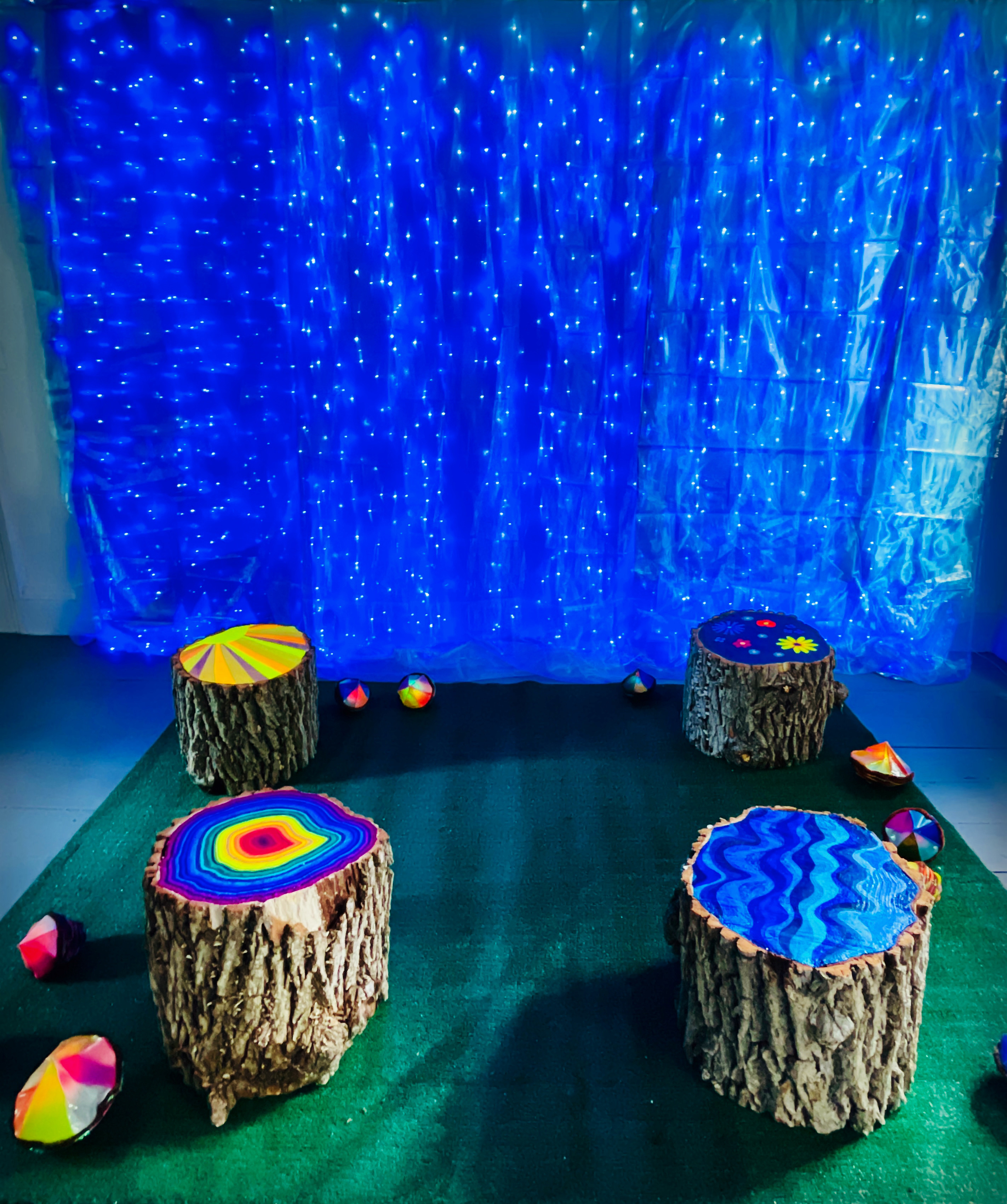
Beth Reitmeyer, Rejuvenation, 2022, mixed media installation, Upstate Art Weekend, ChaNorth, Pine Plains, NY, with support from the Sam and Adele Golden Art Foundation
WR: Has working in the South allowed new connections between the work and environment either in terms of the area’s geography, community, or history of craft? Moreover, what aspects of the works have remained constant regardless of external influence?
BR: Working in the South is very inspiring. I have made caves and sinkholes, which are prevalent in southern Kentucky. I have also created my own version of the Cumberland River, a meandering glowing river that people can crawl into. I lived in Madison, TN outside of Nashville for five years, and I walked in nearby Peeler Park several times per week over those five years. The park on its surface is fairly boring, full of grass and trees. It is located on the banks of the Cumberland River, but the river is difficult to see for the trees. But it is full of deer and turkeys and frogs. I loved watching the seasons change, of watching the clouds move across the sky. Meditative Walk Lanterns are inspired by these walks; additional Lanterns have been added inspired on walks in New York, Connecticut, and Arkansas.
Craft is important in that time is spent on creating the objects. People can tell the sculptures took time to make, and this time shows a high level of care within the creation of the work. It matters to me. Living in an area with a fine craft background has shown me that my objects are not as finely crafted as they could be. My stitches are small enough and my woodworking skills have room for improvement.
WR: Does your art retain a connection to the Nashville art scene now that you also call Kentucky home?
BR: I spend a lot of time in both Kentucky and Tennessee. I currently live in southern Kentucky, 20 miles north of the border with Tennessee and one hour north of Nashville. I am very much connected to both states, creating art and teaching in both places. When I lived in Nashville, I taught in Kentucky several days a week. Currently I am president of COOP Gallery in Nashville, and I am committed to the artistic flourishing of the city. Nashville’s visual arts scene is rebuilding post-pandemic, and it is exciting to be a part of fostering the growth of its culture while investing in emerging artists.
WR: You credit your mother for teaching you sewing and her love of glitter. What is the relationship between object making and familial lineage, and does your art provide craft as an answer to facilitating family bonds?
BR: This is a challenging question. We grew up poor, and we only got one new toy on our birthdays and three toys at Christmas. My mother taught me to sew, and I made stuffed animals based upon patterns within Better Homes and Gardens magazine. She also loved to craft, so I think making weird stuff was a way we could spend time together. My mother came from a dysfunctional family who didn’t pass on traditions and skills. But she knew how to sew. I think she learned from her grandmother, who she lived with for years. She insisted that antique black Singer sewing machines were the best, and I have two that made their way to me. They are from the 1920s, and I hesitate to use them for fear of burning out the motors. My mother also passed away from cancer 20 years ago, so sewing and crafting is one way to carry on her legacy.
Most of the rest of my family are scientists and salespeople. They do not fully understand what being an artist and creating artwork involves, but they are proud of me and come to my exhibitions.
WR: How does employing materials found in a familial or domestic context comment on your choice to depict nature? Do notions of “hand me downs” or inherited sheets and blankets comment on how we enjoy natural resources in regards to previous, current, and new generations?
BR: What do we value? What do we treasure? Do we have what we need? The materials and settings reveal that the everyday is special, that we can be content where we are. Everything does not need to be brand new. The materials and settings can be rejuvenated, refreshed, and regenerated. Time and care create objects that last, that don’t fall apart quickly. You, too, can create new things from the items around your home and from the land that surrounds you.
WR: What relationship does the work present between dreams and optimism? By depicting the surroundings we take for granted in otherworldly quality, do your installations ever provide a new perspective or even hope for what’s possible? How does installation become a space to renew a positive outlook?
BR: My installations are designed to foster hope and love. Dreams and optimism fuel both of these. And I truly want to know what people’s hopes and dreams are. Working together, within the community, we can transform our hopes and dreams into reality. We do not live in a vacuum and need help. My installations give people space to dream about what is possible — in a positive way — all while acknowledging challenges. New perspectives help us look at our world in an optimistic way, which can make all of the difference. Talking about our hopes and dreams and challenges with our neighbors builds relationships and community.
Beth Reitmeyer, Meditative Walk and For There Will Always Be Light, 2022, mixed media, Open Air, 2022, UConn Avery Point, 2022
Beth Reitmeyer is a visual artist primarily based in Nashville, TN. Her current installations are based upon landscape topography and geology, specifically sinkholes, caves, geodes, and rocks. Her work investigates how experiencing the glories of a place impact our sense of being, perception, and relationships with other people. Beth's work has recently been exhibited at the Frist Art Museum, Nashville; OZ Arts, Nashville; The Elizabeth Foundation, New York; Seed Space, Nashville; Zg Gallery, Chicago; Ground Floor Gallery, Brooklyn; BOX13 ArtSpace, Houston; goldenPARACHUTES, Berlin. Beth has been an artist-in-residence at The Studios at MASS MoCA, North Adams, MA and The Ragdale Foundation, Lake Forest, IL.
Wesley Roden is the Gallery Assistant at Tri-Star Arts and recently received a BFA in Painting from the University of Tennessee, Knoxville in 2023. Based in Knoxville, he currently works in digital and mixed media in a continually evolving practice.
* images courtesy of the artist
